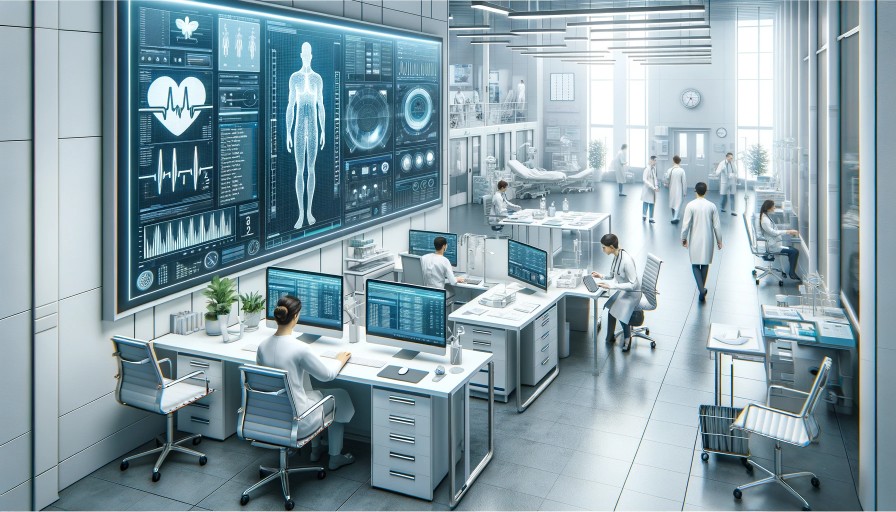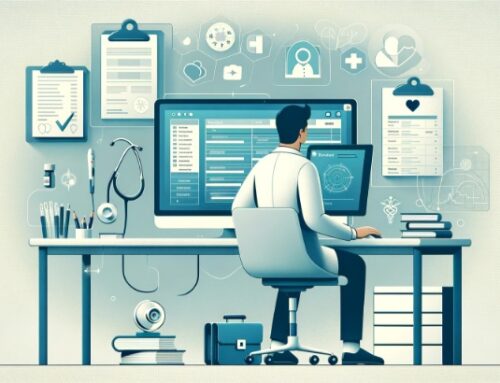How can “Medical Data Entry Services Streamline Workflow in Healthcare Organizations” make things easier in healthcare organizations? Well, let’s take a moment to imagine a world where paperwork doesn’t pile up, where patient information is always up-to-date, and where administrative tasks don’t eat up all your time. Sounds pretty amazing, right? That’s precisely what a streamlined workflow can do for you.
By automating data entry processes, integrating with electronic health record systems, and eliminating manual paperwork, these services can revolutionize how you work. With seamless data sharing between departments and real-time patient information updates, you can focus on what really matters – providing top-notch care to your patients. So, let’s dive in and discover how medical data entry services can transform your workflow.
Automated Data Entry Processes
Automated data entry processes can significantly improve efficiency and accuracy in your healthcare organization’s workflow. By leveraging machine learning algorithms, these processes can intelligently extract and enter data from various sources, such as patient records, lab results, and insurance claims. Machine learning algorithms analyze patterns and learn from previous data entries, enabling them to interpret and enter information accurately. This saves time and reduces the risk of human error, ensuring that your data is entered correctly.
In addition to improving efficiency, automated data entry processes prioritize data security measures. With the increasing amount of sensitive patient information being collected and stored, it is crucial to have robust security measures in place. Automated data entry systems can incorporate encryption protocols, access controls, and audit logs to protect patient data and ensure compliance with privacy regulations.
Transitioning into the subsequent section about integration with electronic health record (EHR) systems, automated data entry processes seamlessly integrate with EHR systems, allowing for real-time updates and data synchronization. This integration eliminates the need for manual data entry, reducing the risk of duplication and inconsistencies. By streamlining data entry and integrating EHR systems, healthcare organizations can achieve a more efficient and accurate workflow, ultimately improving patient care and outcomes.
Integration With Electronic Health Record Systems
Integrating with electronic health record systems allows you to seamlessly synchronize and update data in real time, eliminating the need for manual entry and reducing the risk of duplication and inconsistencies. This integration offers several benefits for healthcare organizations:
-
Improved Efficiency: By connecting your data entry services with electronic health record systems, you can streamline workflow processes and reduce the time spent on manual data entry tasks. This allows healthcare professionals to focus more on patient care and less on administrative work.
-
Enhanced Accuracy: Manual data entry is prone to errors, which can seriously affect healthcare. By integrating with electronic health record systems, you can ensure that data is accurately captured and updated in real time, reducing the risk of data inconsistencies and improving patient safety.
-
Data Privacy: Electronic health record systems offer robust security measures to protect patient information. By integrating with these systems, you can ensure that data privacy concerns are addressed and that patient confidentiality is maintained.
-
Cost Effectiveness and Return on Investment: While initial costs may be associated with integrating data entry services with electronic health record systems, the long-term benefits far outweigh the investment. Improved efficiency, accuracy, and data privacy can lead to cost savings and a higher return on investment for healthcare organizations.
Elimination of Manual Paperwork
By digitizing and automating data entry processes, you can eliminate the need for manual paperwork, making your workflow more efficient and reducing the risk of errors. Manual paperwork can be time-consuming and prone to mistakes, leading to delays and potential patient safety concerns. However, by implementing medical data entry services that digitize and automate the process, you can significantly reduce the occurrence of errors and increase productivity.
Digitizing data entry eliminates the need for physical paper forms, reducing the chances of misplacing or losing important information. Instead, information can be directly entered into electronic systems, ensuring accuracy and accessibility. Automation further streamlines the process by automatically populating fields and validating data, minimizing the need for manual data entry and reducing the risk of human error.
The reduction of errors not only improves the quality of patient care but also saves time and resources. By eliminating manual data entry, healthcare organizations can allocate their staff’s time to more critical tasks, enhancing overall productivity. Additionally, digitized and automated data entry can easily retrieve and share information, promoting seamless communication and collaboration among healthcare professionals.
By eliminating manual paperwork and reducing errors, healthcare organizations can now focus on the next step: reducing administrative tasks.
Reduction of Administrative Tasks
By implementing medical data entry services, you can significantly reduce administrative tasks in your healthcare organization. Reducing administrative workload will lead to enhanced operational efficiency and improved data accuracy. With streamlined workflows and automated data entry processes, you can free up valuable time and resources, allowing your staff to focus on more critical tasks and provide quality patient care.
Enhanced Operational Efficiency
Improve your operational efficiency by reducing administrative tasks with the help of medical data entry services. By streamlining your workflow, you can experience improved productivity and cost savings. Here are four ways that medical data entry services can enhance your operational efficiency:
-
Automated data entry: Manual data entry can be time-consuming and prone to errors. Medical data entry services utilize automated systems to input data accurately and efficiently.
-
Streamlined documentation: Medical data entry services can help organize and digitize patient records, making it easier to access and update information and reducing the time spent on paperwork.
-
Efficient billing and coding: Medical data entry services can ensure accurate and timely billing and coding, reducing the risk of errors and improving revenue cycle management.
-
Enhanced data security: Medical data entry services employ strict security measures to protect sensitive patient information, reducing the risk of data breaches and ensuring compliance with privacy regulations.
Improved Data Accuracy
Increase data accuracy and reduce administrative tasks by utilizing medical data entry services in your healthcare organization. Data entry is a crucial aspect of healthcare operations, and any inaccuracies can lead to severe consequences. By outsourcing data entry to specialized service providers, you can ensure that the data is validated and entered accurately, minimizing errors and improving the overall quality of your data. Additionally, medical data entry services employ stringent data security measures to protect sensitive patient information, reducing the risk of data breaches and ensuring compliance with privacy regulations. By relying on these services, healthcare organizations can free up valuable time and resources that would otherwise be spent on administrative tasks, allowing staff to focus on delivering quality patient care. This improved accuracy and reduced administrative burden sets the stage for seamless data sharing between departments, which will be discussed next.
Seamless Data Sharing Between Departments
Enhance workflow efficiency by facilitating seamless data sharing between departments with medical data entry services. When departments can easily share data, it improves collaboration and more informed decision-making. Here are four key benefits of seamless data sharing between departments:
-
Faster access to information: With medical data entry services, data can be entered and shared in real-time, allowing departments to access and retrieve necessary information quickly. This enables healthcare professionals to make timely and informed decisions, ultimately improving patient care.
-
Enhanced collaboration: Seamless data sharing promotes collaborative decision-making among different departments. When departments can easily share data, they can work together more effectively, leading to better coordination and improved patient outcomes.
-
Avoidance of data duplication: Standardized data formats ensure that information is entered consistently across departments. This reduces the risk of data duplication and improves data accuracy, saving time and resources.
-
Improved efficiency and productivity: With seamless data sharing, healthcare organizations can streamline workflows and eliminate manual processes. This leads to increased efficiency and productivity, as staff can spend less time searching for information and more time delivering quality care.
Real-Time Updates on Patient Information
Stay up-to-date with real-time updates on patient information through medical data entry services. With remote patient monitoring and telemedicine integration, healthcare organizations can now access and update patient information in real-time, enabling more efficient and accurate care delivery.
Remote patient monitoring allows healthcare providers to collect vital signs, symptoms, and other relevant health data from patients in their own homes. This data is then transmitted securely to the healthcare organization’s system, where it can be immediately entered and updated. This real-time access to patient information ensures that healthcare providers have the most current and accurate data at their fingertips, enabling them to make informed decisions about patient care.
Telemedicine integration further enhances real-time updates on patient information by facilitating virtual consultations and remote patient interactions. Through telemedicine platforms, healthcare providers can communicate with patients, review their medical history, and update their records in real time. This eliminates the need for physical visits to healthcare facilities and allows for seamless updates on patient information, regardless of the patient’s location.
Frequently Asked Questions
How Can Medical Data Entry Services Help in Improving Patient Care and Outcomes?
Medical data entry services can improve efficiency and data security, improving patient care and outcomes. They streamline workflow by accurately inputting and organizing medical information, reducing errors, and allowing for more informed decision-making.
Is It Possible to Customize the Automated Data Entry Processes According to the Specific Needs of Medical Data Entry Services Streamline Workflow in Healthcare Organizations?
You can customize automated data entry processes to fit your healthcare organization’s needs. This customization offers numerous benefits, such as increased efficiency, accuracy, and streamlined workflow, improving overall productivity and patient care.
What Are the Potential Challenges or Barriers to Integrating Medical Data Entry Services With Existing Electronic Health Record Systems?
Integrating medical data entry services with existing electronic health record systems can present integration challenges and data security concerns. Addressing these issues is essential to ensure a smooth workflow and protect patient information.
Can Medical Data Entry Services Help in Reducing Errors and Improving Data Accuracy in Healthcare Organizations?
Medical data entry services can significantly assist in reducing transcription errors and enhancing data quality in healthcare organizations. These services contribute to improved patient care and overall efficiency by streamlining the workflow and ensuring accurate data entry.
How Can Seamless Data Sharing Between Different Departments Contribute to Better Coordination and Collaboration Among Healthcare Professionals?
Seamless data sharing between departments enhances interdepartmental communication and coordination among healthcare professionals. It streamlines workflow, reduces errors, and improves patient care. Medical data entry services play a crucial role in facilitating this seamless exchange of information.




